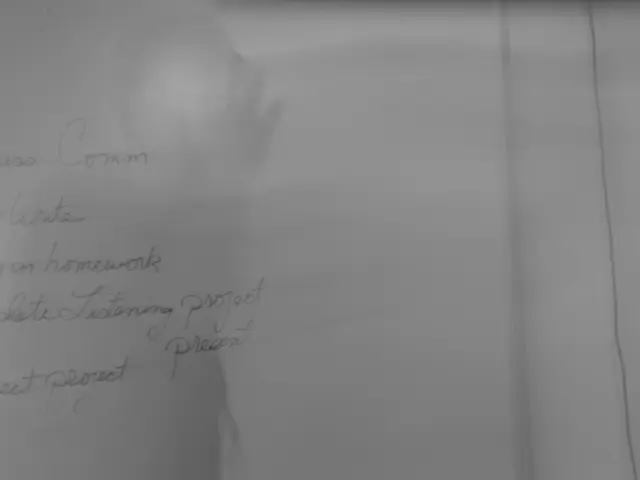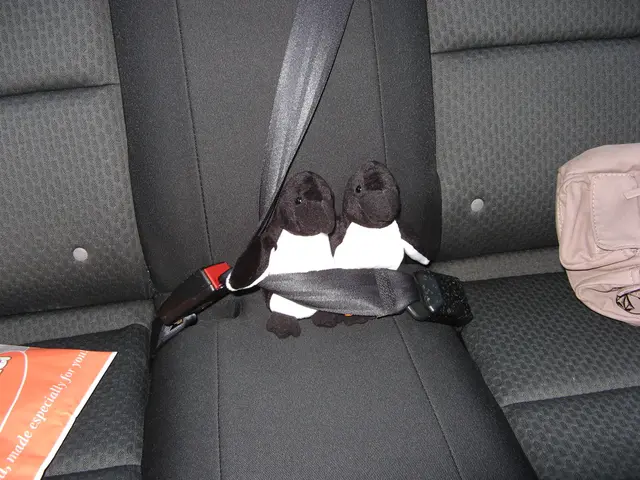EU commences construction on the continent's biggest battery storage facility, located in Estonia.
Estonia Turns the Page on Energy Security with the Largest Battery Park in Europe* Share472* Tweet* LinkedIn* Email
Estonia takes a significant stride toward securing its energy sovereignty, laying the groundwork for Europe's largest battery park in Kiisa, just outside Tallinn. spearheaded by a joint venture between Estonian energy company Evecon, French solar producer Corsica Sole, and sustainable finance management company Mirova. The project is instrumental in building synergy between the Baltic power grids and Europe, targeting an ultimate integration by 2025.
Referred to as the Baltic Storage Platform, this ambitious initiative aims to wean Estonia from its historical dependency on the Russian grid and boost energy security while bolstering the country's transition to renewable energy. The two battery facilities, consisting of a combined output of 200 megawatts and a total storage capacity of 400 MWh, enough to power approximately 90,000 homes, are scheduled for completion by the end of 2025, with the second battery park following in 2026.
Harnessing the Power of Storage
Battery parks serve as large-scale energy storage facilities, typically using lithium-ion batteries housed in containers to store electricity generated during periods of low demand and discharge it during peak demand or when renewable energy production drops. The emerging importance of these storage systems becomes apparent as the Baltic nations prepare to connect their grids with Europe, setting a priority on energy security. Indeed, the Kiisa project contributes significantly to stabilizing the power supply, particularly as Estonia emphasizes wind and solar energy. Smoothing out supply fluctuations ensures grid stability and reliability in the long run.
Making a Green Leap Forward
This initiative paves the way for Estonia's goal to source 100% of its electricity from renewable sources by 2030. Minister of Climate, Yoko Alender, emphasized that storage systems are crucial in facilitating a "clean, reliable, and affordable" energy future for Estonia. Synchronising the Baltic grids with Europe is also a geopolitical move that seeks to sever the region's dependency on the Russian grid, increasing self-sufficiency and resilience against potential energy disruptions in the context of evolving geopolitical challenges.
A Global Trend Toward Storage
The Kiisa project isn't an island of innovation. Countries worldwide are investing in large-scale battery storage to improve grid stability and integrate more renewable sources. Countries like Belgium, the United States, and Australia, for instance, are at the forefront of this movement, building similar facilities to support their domestic energy goals.
However, battery parks carry environmental concerns. Lithium-ion batteries require mined materials that can lead to habitat destruction and pollution. Lithium, cobalt, and nickel leaks during improper disposal pose risks to groundwater and soil, endangering wildlife and human health. Moreover, the manufacturing process generates a significant carbon footprint.
Moving Forward
Adopting advanced recycling, such as automated sorting and hydrometallurgical recycling, can help Improve recovery rates and ensure compliance with EU battery regulations at facilities like Kiisa. Public awareness campaigns and partnerships with certified recyclers are essential to prevent improper disposal and mitigate associated risks.
The battle for a sustainable future is far from over, but ambitious projects like the Kiisa battery park mark important milestones in the pursuit of energy independence and environmental protection.
- Share472
- Tweet
Enrichment Data:
Environmental Concerns: Improper disposal of lithium-ion batteries can lead to:
- Toxic emissions: Harmful chemicals like hydrogen fluoride (HF), PM2.5/PM10 particles, and heavy metals are released, posing significant hazards for respiratory health and ecosystem contamination[1][3].
- Soil and water contamination: During improper disposal, lithium, cobalt, and nickel eventually leak into groundwater and soil, endangering wildlife and human health[4][5].
- Carbon footprint: Manufacturing these batteries contribute to approximately 50–100 million metric tons of CO₂ annually, with production accounting for ~40% of an EV's total emissions[2].
Solutions: To ensure environmentally sound lithium-ion battery handling and disposal, consider implementing strategies like:
- Enhanced recycling: Recovering lithium, cobalt, and nickel reduces reliance on destructive mining and lowers CO₂ emissions, ensuring adherence to closed-loop systems[4][2].
- Thermal runaway prevention: Use fire-resistant storage, battery management systems (BMS), and thermal monitoring to prevent fires and associated environmental hazards during handling[5][1].
- Regulatory measures: Implement strict disposal protocols and subsidies for eco-friendly production methods (e.g., lithium iron phosphate batteries)[2][4].
For facilities like Kiisa, maintaining partnerships with certified recyclers, adopting advanced recycling methods, and conducting public awareness campaigns can help safeguard the environment while maximizing the benefits of this trailblazing project.
- The ambitious Baltic Storage Platform in Kiisa, Estonia, is set to integrate Europe's power grids, targeting complete synchronization by 2025.
- This joint initiative by Evecon, Corsica Sole, and Mirova will culminate in two battery facilities, capable of generating 200 megawatts and storing 400 MWh, enough to power 90,000 homes.
- The aluminum-ion battery park project is a vital step for Estonia, aiming to secure energy independence from the Russian grid and expedite its transition to renewable energy sources.
- As part of Estonia's pledge to source 100% of its electricity from renewables by 2030, the Kiisa project will help build a reliable and affordable green energy future, as advocated by Minister of Climate, Yoko Alender.
- Concurrently, countries like Belgium, the United States, and Australia are also investing in large-scale battery storage facilities to bolster their own energy security and integration of renewable energy.
- Despite the benefits of battery parks, improper disposal poses environmental concerns including toxic emissions, soil and water contamination, and a significant carbon footprint.
- To address these issues, implementing strategies such as enhanced recycling, thermal runaway prevention, and regulatory measures can help ensure the environmentally sound handling and disposal of lithium-ion batteries.
- For facilities like Kiisa, partnering with certified recyclers, adopting advanced recycling methods, and educating the public are essential to minimizing environmental risks and maximizing the project's overall benefits.
- In the pursuit of energy independence and environmental protection, projects like the Kiisa battery park represent vital milestones in the global battle for a sustainable future.







